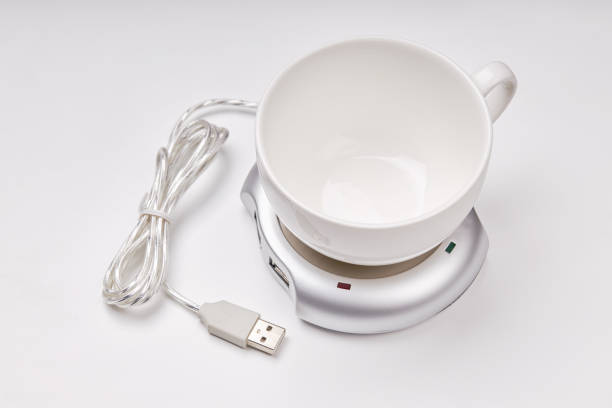The Cuckoo rice cooker is a dependable and convenient kitchen appliance that simplifies the process of cooking rice. To ensure it continues to function efficiently and produce delicious, fluffy rice, regular cleaning is essential. In this article, we’ll walk you through a step-by-step guide on how to clean your Cuckoo rice cooker, offering tips and insights to keep it in top condition.
Why Cleaning Your Cuckoo Rice Cooker is Important
Ensuring Food Safety and Hygiene
Regular cleaning eliminates food particles and bacteria that could linger in your rice cooker, reducing the risk of foodborne illnesses.
Prolonging the Lifespan of Your Rice Cooker
Preventing the buildup of dirt, grime, and mineral deposits helps maintain your rice cooker’s performance and extends its lifespan.
Preventing Cross-Contamination
Thorough cleaning ensures that flavors and odors from previous cooking sessions don’t transfer to your next batch of rice.
Maintaining Optimal Cooking Performance
A clean rice cooker provides even heat distribution, preventing rice from sticking or burning and ensuring consistent results.
Tools and Supplies You’ll Need
Before starting the cleaning process, gather the following items:
- Soft Cloth or Sponge: A non-abrasive cloth or sponge is ideal for cleaning the various parts of the rice cooker.
- Mild Dish Soap: Choose a gentle dish soap that effectively removes grease and food residue without harming the cooker’s surfaces.
- Vinegar or Lemon Juice: These natural cleaners are great for tackling mineral deposits or limescale.
- Water: Essential for rinsing and diluting cleaning solutions.
- Toothbrush or Small Brush: Perfect for reaching into crevices and cleaning hard-to-reach areas.
- Damp Cloth for Exterior Cleaning: Use this to wipe down the exterior and remove any fingerprints or stains.
Step-by-Step Guide to Cleaning Your Cuckoo Rice Cooker
Follow these steps to keep your Cuckoo rice cooker clean and functioning at its best:
Step 1: Unplug and Cool Down the Rice Cooker
Before you begin cleaning, make sure the rice cooker is unplugged and has cooled down completely. This helps avoid any accidents or burns during the cleaning process.
Step 2: Remove and Clean the Inner Pot
Take out the inner pot and wash it with warm soapy water. Use a sponge or cloth to remove any stuck-on food particles. Rinse thoroughly and allow it to dry before reassembling.
Step 3: Clean the Steam Vent and Condensation Collector
Refer to the manufacturer’s instructions for removing and cleaning the steam vent and condensation collector. Wash these parts with warm soapy water, using a toothbrush or small brush to remove any residue.
Step 4: Wipe the Heating Plate and Surrounding Area
Use a damp cloth or sponge to gently wipe the heating plate and surrounding area, removing any spills or food remnants. Be careful not to wet the electrical components.
Step 5: Clean the Exterior of the Rice Cooker
Wipe down the exterior surfaces, including the control panel and handle, with a damp cloth. Dry thoroughly to prevent water spots from forming.
Step 6: Dry and Reassemble the Components
Ensure that all components are completely dry before reassembling the rice cooker. Place the inner pot back into the cooker and secure the lid.
Cleaning Methods for Your Cuckoo Rice Cooker
The Cuckoo rice cooker offers both Automatic and Manual Steam Cleaning methods, making it easier to maintain.
Automatic Steam Cleaning
The Automatic Steam Cleaning function simplifies the cleaning process:
- Activate Steam Cleaning Mode: After cooking, press the “Steam Clean” button on your Cuckoo rice cooker.
- Let the Steam Do the Work: The rice cooker will generate steam that circulates within the inner pot, loosening any food particles or stains.
- Rinse and Dry: Once the cycle is complete, rinse the inner pot with water and dry it thoroughly before reassembling.
Manual Steam Cleaning
For a more thorough clean, you can perform manual steam cleaning:
- Prepare a Cleaning Solution: Mix equal parts water and vinegar or lemon juice in a bowl.
- Pour the Solution into the Inner Pot: Add the solution to the inner pot.
- Start the Cooking Process: Close the lid and start the rice cooking process without adding any rice. The solution will boil and generate steam.
- Clean the Inner Pot: As the steam circulates, it will effectively clean the pot. After the cycle, turn off the rice cooker and let it cool.
- Rinse and Dry: Remove the inner pot, rinse thoroughly with water, and dry completely before reassembling.
Troubleshooting and Common Cleaning Issues
Dealing with Stuck-On Food Residue
Soak the inner pot in warm soapy water for a few minutes to loosen stubborn residue before cleaning.
Removing Stubborn Stains
Apply a paste made from baking soda and water to the stain. Let it sit for a few minutes, then gently scrub.
Eliminating Foul Odors
Wipe the interior with a cloth dampened with vinegar or lemon juice, then run a cooking cycle with only water.
Handling Mineral Buildup or Limescale
Use a solution of equal parts vinegar and water or lemon juice and water to dissolve mineral deposits. Let the solution sit for a few minutes before rinsing thoroughly.
Additional Tips for Proper Maintenance
- Regular Descaling for Optimal Performance: Depending on your water’s mineral content, regularly descale your rice cooker using a vinegar solution.
- Avoid Abrasive Cleaning Agents: Harsh cleaners or abrasive scrubbing tools can damage the rice cooker’s surfaces. Stick to mild dish soap and soft cloths or sponges.
- Proper Storage: After cleaning and drying, store your rice cooker in a clean, dry place. Avoid stacking heavy items on top to prevent damage.
- Cleaning Accessories and Attachments: Clean the rice measuring cup, spatula, and other removable accessories with warm soapy water. Rinse and dry them before storing.
- Follow the Manufacturer’s Instructions: Always refer to the user manual for specific cleaning guidelines tailored to your rice cooker model.
Frequently Asked Questions (FAQs)
How often should I clean my Cuckoo rice cooker?
It’s best to clean your rice cooker after every use to maintain hygiene and performance.
Can I put the inner pot in the dishwasher?
Most Cuckoo rice cooker inner pots are not dishwasher-safe. Check the manufacturer’s instructions for specific cleaning guidelines.
Can I use bleach to clean my rice cooker?
It’s not advisable to use bleach, as it can be too harsh and may damage the surfaces of the rice cooker. Stick to mild dish soap or natural cleaning solutions like vinegar or lemon juice.
Is it safe to soak the inner pot in soapy water?
Yes, soaking the inner pot in warm soapy water is safe and can help loosen stubborn food residue before cleaning.
Can I use a scouring pad to remove tough stains?
Avoid using scouring pads or abrasive cleaners, as they can scratch the surfaces of your rice cooker. Use non-abrasive cleaning tools instead.
Conclusion
Regular cleaning is essential to maintaining the performance, safety, and longevity of your Cuckoo rice cooker. By following this step-by-step guide and incorporating proper maintenance practices, you can ensure that your rice cooker continues to deliver perfectly cooked rice every time. Keep your appliance in top shape by regularly cleaning the inner pot, steam vent, condensation collector, and exterior surfaces. Address any cleaning issues promptly, and your Cuckoo rice cooker will remain a reliable kitchen companion for years to come.





